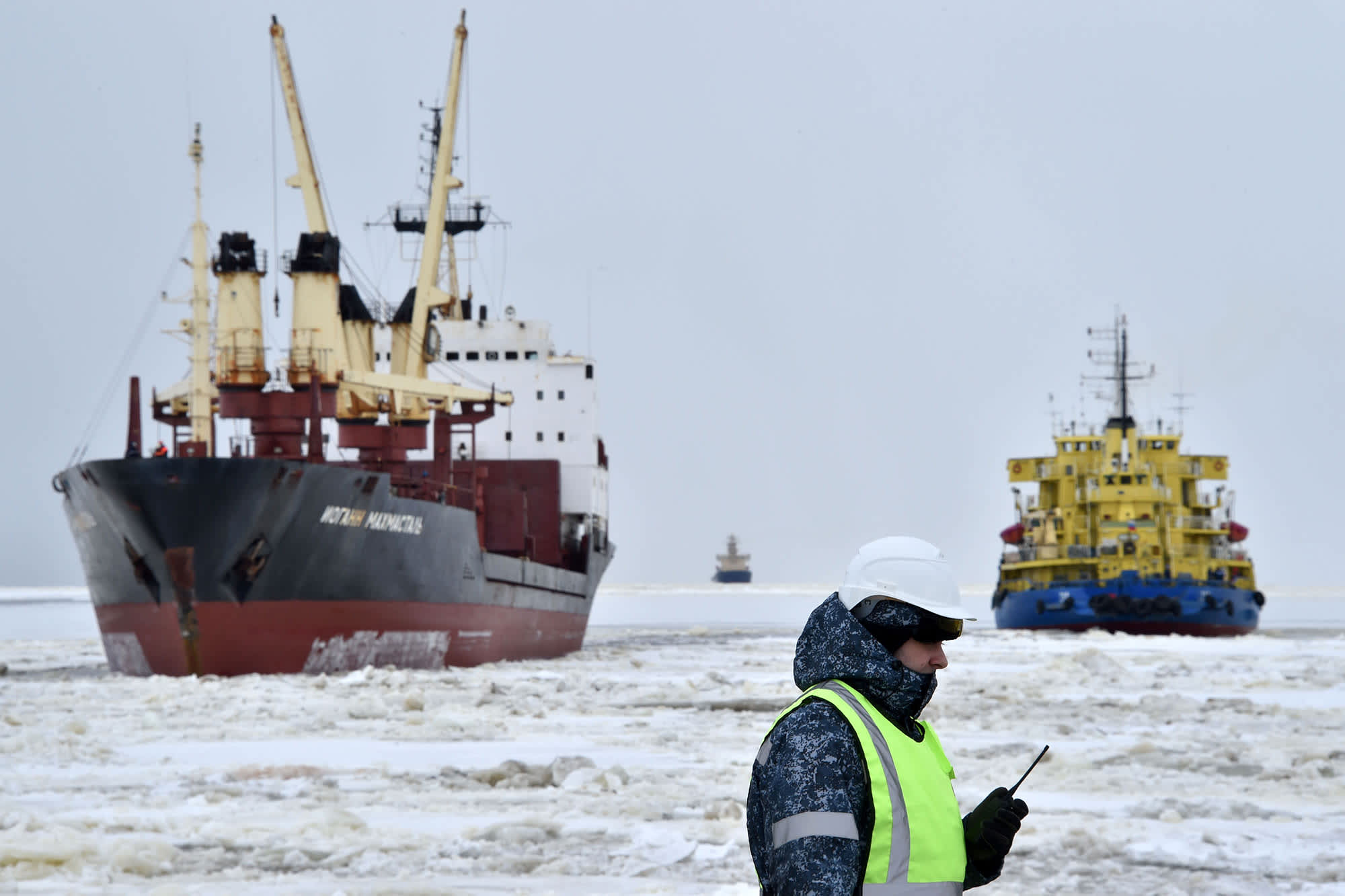
Sick of shipping delays? There might be a faster way to ship supplies around the world in the not too distant future.
With melting sea ice in the Arctic, Russia and China are expanding their shipping infrastructure over the Eurasian continent. Last year’s Suez Canal incident, when a ship got stuck and blocked global traffic for several days, was seen as just the argument to entice businesses to explore using Arctic shipping routes.
“Many Russian officials are very quick to jump on the fact that Arctic sea routes are potentially much more useful for avoiding the kind of bottlenecks that one would see in either Panama or Suez Canal,” said Marc Lanteigne, associate professor of political science at the Arctic University of Norway.
China claims using the Northern Sea Route would shave almost 20 days off the shipping time now spent traveling through the Suez Canal.
But Arctic transit is no small feat and is still highly unpredictable. Captain Kenneth Boda took the U.S. Coast Guard cutter HEALY through the Arctic over Alaska and Canada this past summer.
“It can be extremely brutally cold in the Arctic and then you can have a beautiful sunny day,” he told CNBC from his captain’s quarters on the ship. The HEALY is one of two specialty ships known as icebreakers that the U.S. has to traverse the ice-clogged waters.
However, scientists are predicting that by 2035 Arctic sea lanes might be ice-free in the summertime.
While that could be good news for shippers, it is a real threat to the Native Arctic communities. Dalee Sambo Dorough, the international chair of the Inuit Circumpolar Council, told CNBC, “The idea that it can be traveled across in a smooth and relatively safe fashion, because there’s no ice, is very scary.”
Two of the largest shippers in the world, MSC and Maersk, told CNBC they’ve decided not to ship in the Arctic. MSC cited both environmental degradation and unpredictability issues, among other considerations.
Others, though, argue global environmental conditions could improve, with reduced carbon emissions from shorter transits.
“It’s really a question of saving shipping cost-saving time versus that lack of predictability,” Gabriella Gricius from the North American and Arctic Defense and Security Network told CNBC.
Watch the video to find out more about the opportunities and perils of increased Arctic shipping.




